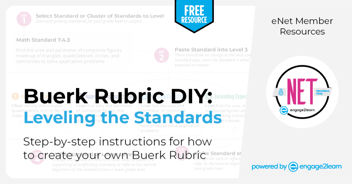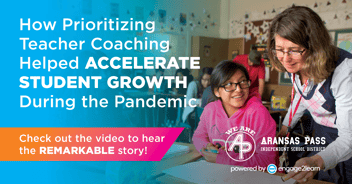How Assessing More and “Testing” Less is Right for Kids
In public schools, assessments have become the driving force behind most instructional decisions, so much so that there is a growing frustration that educators are just “teaching to the test.” Because of this, it’s no secret that our students feel burned out, teachers are under immense pressure, and parents are frustrated with the stress that testing puts on their students. So, how can we create an atmosphere in our schools that decreases the anxiety of testing for students, faculty, and parents?
The answer is not more testing but rather more assessing. Let me explain.
I have a close friend whose son is hearing impaired and has struggled with school his entire life. He thrives in social situations, is gifted in kinesthetic fields, but could never meet expectations on his school or state tests. When my friend shared her family’s situation with me and their decision to homeschool their son, I asked her if she knew how much he had grown in Reading over the course of the year, or in which Math concepts he was strongest. She could not reply. His school had done a fantastic job of testing my friend’s son, but they didn’t know the power of tracking and celebrating his growth or providing differentiated materials to close his gaps. Without this information, the only narrative the school district gave my friend about her son was that he couldn’t pass his tests. In other words, he was failing at school. It saddens me to know that this became the primary reason my friend felt she needed to remove her son from public education and homeschool him.
There are a lot of reasons why a family may choose not to send their children to their neighborhood public school, but as someone who has committed her life to public education, I can confidently say that failing at school should NOT be one of them. Yes, assessments have their place in education, and our team understands the enormous pressures that districts are under when it comes to testing. But, what if testing isn’t always about a grade?
Testing is NOT the Final Destination
The beauty of assessing students doesn’t lie in the score. It is not their final destination. It should never be their permanent address.
At engage2learn, we believe that standards-aligned assessments are most effective when students can identify their needs and make decisions on how to utilize available resources and tools to close the gaps in their learning. In turn, assessments become a valuable part of the learning journey by creating room for students to learn and grow. When students, educators, and parents can start viewing tests as opportunities for growth, fear about tests begins to subside. As fears subside, educators have the unique opportunity to assess more to help students focus their efforts in the areas where they need the most growth. These assessments can take on a variety of forms but fall into two basic categories.
Formative assessments are designed to track student growth through pre-assessments, exit tickets, self-assessments, and checkpoints and should always, always emphasize feedback. Formative assessments provide opportunities for teachers and students to reflect on and determine the next steps for growth. Instead of assuming that all students share the same level of knowledge on a standard, use a pre-assessment as a base to determine where students actually are and where they need to be. This allows for true differentiation to happen in the classroom by providing a variety of scaffolded resources to support each level of learner. Checkpoints and exit tickets should be designed to show progress on the standard and are embedded throughout the project or unit.
Summative assessments should assess the mastery of standards on an individual basis instead of the whole group. A summative assessment should reflect what a student has learned throughout the project or unit. Students should be confident when it’s time for a summative because they’ve received a plethora of formative feedback throughout the unit.
The Power of Rubrics
Beginning with the end in mind is crucial when choosing or designing assessments, and using a rubric becomes the map to reach the destination. For assessments to be purposeful, students should reflect on feedback and ask themselves:
- What do I know?
- What do I need to know?
- How will I get there?
Providing a rubric by scaffolding the standard is perhaps one of the most powerful tools for students to set goals and track growth. It allows them to focus in on the details of their learning and create a plan for movement.
As a professional football coach, Tom Landry understood the power in purposeful planning: “Setting a goal is not the main thing. It is deciding how you will go about achieving it and staying with that plan.” Teachers can also leverage the growth potential of a good plan by providing students with a template that allows them to track and plan their goals and growth. Teachers provide the resources, but the power lies in the hands of the students as they determine their own trajectory.
Using Technology as an Assessment Tool
Contrary to popular belief, testing doesn’t have to be boring or mundane. Technology has opened the door to assess students in a multitude of ways. Plus, digital learning cuts down on teacher grading by providing real-time data!
Check out these easy to use and engaging assessment tools:
- Google Forms: an online Google app that allows teachers to create quizzes and surveys and saves data directly to a spreadsheet
- Kahoot: a game-based, real-time, response system played by the whole class
- Quizizz: allows you to create and conduct student-paced engaging formative assessments
- ReadWorks: a website with leveled reading passages and quizzes that provides immediate feedback
- Khan Academy: online self-paced videos and quizzes with a personalized learning dashboard
- Nearpod: allows teachers to create presentations, polls, quizzes, videos, etc.
- Padlet: an application to create an online bulletin board that allows students to respond to questions or topics to check for understanding
- Flipgrid: a website that allows teachers to create “grids” to facilitate video discussions
Don’t be afraid to mix things up a bit! Adding a variety of testing platforms will keep students engaged and motivated, and will be easier on you, too.
Celebrate Growth!
There is something powerful about students celebrating personal growth. While visiting 2nd grade Math classrooms in Arlington ISD, I asked students to tell me about their learning, and this was the reply: “This is where I am on the rubric. These are the resources that I’m going to use to help me learn, and when I’m ready, I’ll take an exit ticket to see if I’ve grown.” In these classrooms, students are given the freedom to take a proactive versus a reactive approach to their learning and their confidence soars.
Celebrate student growth by reminding them that pre-assessments are simply to determine where we need to start our learning journey. Praise students when they show improvement. Provide tools to help them track their growth on standards. In the end, your students will be confident test-takers who can visibly see all of the knowledge they’ve acquired throughout the year.
I can’t help but wonder if things would’ve been different for my friend’s son if, instead of feeling he was failing at school, he felt encouraged by all that he’d accomplished throughout the year.
Connecting the Dots
It’s critical to use formative assessments as a regular part of your classroom environment, but what’s more important is what you do with that information. Assessments should become a regular part of your classroom flow.
- Write a rubric! It’s an individualized continuum of learning for your students and forces you, as the facilitator, to familiarize yourself with the depth and complexity of the standard. It’s the best way to begin with the end in mind!
- Create a pre-assessment that is reflective of the rubric to determine what your students know and need to know.
- Provide a variety of differentiated resources for students to choose from to support them at each level of the rubric.
- Create formative and summative assessments to track student growth and remediate where needed.
- Celebrate the growth that your students are making!
Replace the old “pass or fail” mindset of testing with the idea that assessments are a tool to track student growth, and you are guaranteed to have students who feel successful and confident about their learning.



